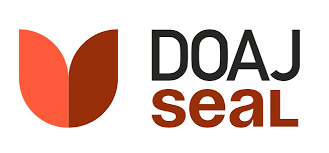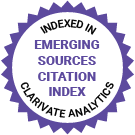JMIR Research Protocols
Protocols, grant proposals, registered reports (RR1)
Editor-in-Chief:
Amy Schwartz, MSc, Ph.D., Scientific Editor at JMIR Publications, Ontario, Canada
Impact Factor 1.4 CiteScore 2.4
Recent Articles

Hemolytic transfusion reactions are a major complication in patients with β-thalassemia major receiving regular transfusions. These reactions can be influenced by blood group incompatibilities, particularly in settings with limited genotyping practices. In Indonesia, the role of blood group genotyping in predicting hemolysis has not been thoroughly studied.

Prenatal anxiety affects between 20% and 30% of pregnant people and is associated with adverse prenatal health conditions, birth outcomes, and postpartum mental health challenges. Individuals from racial and ethnic minority groups, sexual and gender minority groups, and those with low income are all at heightened risk for prenatal anxiety due to disproportionate exposure to adverse social determinants of health. Digital cognitive behavioral therapy (dCBT) has been shown to reliably reduce anxiety in mostly White and middle- to higher-income samples, but its efficacy in low-income and marginalized pregnant people is understudied.

The COVID-19 pandemic has had disproportionate economic and health impacts on self-employed workers in Nigeria, particularly self-employed women and youth. Though uniquely different, the COVID-19 pandemic shares similarities with events such as childbirth, family, and health emergencies. Self-employed young women lack adequate support structures to cope with disruptive life events, which have negative consequences for their well-being. This is concerning, as 86% of women in the Nigerian labor force are self-employed.


In the Kyrgyz Republic, it is estimated that 18% of people living with HIV are undiagnosed and more than half are diagnosed late (CD4 lymphocyte count of <350 cells/μL). For viral hepatitis, before 2023, free testing was only available to people living with HIV, which led to a low testing uptake. A new national program on the elimination of HIV and viral hepatitis infection for the years 2023-2027 recognizes the need to scale up testing to reduce the gap in undiagnosed people in the country.

Since the World Health Organization declared COVID-19 a global pandemic, health systems and health system leaders have faced unprecedented challenges through the various stages of the crisis. Canada and other health systems were largely ill-prepared to handle this crisis. The longevity of the pandemic has profoundly affected health care systems and compounded the rates of negative psychological outcomes in health systems’ leaders and staff, rates of emotional exhaustion, and burnout.

Oral potentially malignant disorders (OPMDs) constitute the most important precursors of oral cancer. Histopathological examination of a biopsy from a clinically suspicious lesion is still the gold standard for the diagnosis of oral cancer. Adjunctive techniques such as autofluorescence, toluidine blue (TB), and others have been evaluated among high-risk individuals such as chronic tobacco chewers or in patients with suspicious lesions. However, evaluation of these noninvasive adjunctive techniques has not been performed in primary health care settings. Since the first point-of-contact of individuals living in rural and semiurban areas are the primary health care workers, evaluation of these noninvasive adjuncts is likely to assist and strengthen the population-wide oral cancer screening in high-burden countries such as India.

Continuous advancements in diabetes technologies have improved self-management for people with type 1 diabetes. Continuous glucose monitoring and automated insulin delivery systems have enhanced the quality of life and glycemic outcomes while reducing severe hypoglycemia and diabetes ketoacidosis hospitalizations. Despite these benefits, racial inequities in the use of advanced diabetes technology (ADT) persist.

Interprofessional teamwork is essential for patient outcomes in emergency medicine; yet, effective training in this area is scarce. Virtual reality (VR) provides a promising, resource-efficient solution for simulating emergency scenarios and facilitating interprofessional collaboration. While VR-based training has shown benefits for medical skill and knowledge acquisition, assessing teamwork within such environments remains a challenge due to the lack of validated measurement tools. Existing teamwork assessment instruments, developed for physical simulations, may not fully apply to VR due to differences in communication modalities, interaction mechanics, and observer perspectives.

Rumination is a transdiagnostic process present in several psychological disorders, involving repetitive negative thinking that individuals may perceive as difficult to control. While the roles of numerous mechanisms underlying rumination have been supported, experiential avoidance (EA) still lacks empirical backing, despite a strong theoretical foundation, partly due to difficulties in examining EA in an ecologically valid context. One promising approach to addressing this challenge is through reducing EA using mobile health (mHealth) and ecological momentary intervention (EMI), and assessing any subsequent decrease in rumination’s deleterious outcomes.

Pain experienced during childbirth can significantly impact the progress of labor and the well-being of both the mother and the fetus. Effective management of labor pain is a crucial component of childbirth care. Nonpharmacological methods of pain relief offer notable advantages over pharmacological approaches, including enhanced maternal and fetal safety, equitable access to health care, and greater availability. Among the nonpharmacological options, transcutaneous electrical nerve stimulation (TENS) and acupoint stimulation are two commonly used methods for alleviating pain during labor. However, the clinical efficacy of these methods remains inconsistent, which hinders the generation of high-quality evidence for clinical practice.

In recent years, breast cancer treatment has taken the path toward personalized medicine. Based on individual tumor biology, therapy tailored to the particular subtype of cancer is increasingly being used. The aim here is to find the most suitable therapy for the disease. However, the success of therapy depends to a large extent on the patient’s adherence to treatment. This, in turn, depends on how the therapy is tolerated and how the treatment team cares for the patient. Patient-centered care seeks to identify and address the individual needs of each patient and to find the best form of care for that person.
Preprints Open for Peer-Review
Open Peer Review Period:
-
Open Peer Review Period:
-
Open Peer Review Period:
-













